Eastern Box Turtle (Terrapene carolina carolina) are fascinating creatures that have captured the hearts of many pet enthusiasts.
Their unique personalities, beautiful shell patterns, and manageable size make them a popular choice among reptile lovers.
In this post, we’ll cover everything you need to know about Eastern Box Turtles, from selecting the perfect pet to providing optimal care, diet, and habitat.
Let’s dive into the captivating world of these remarkable reptiles.
Choosing Your Eastern Box Turtle: Wild vs. Captive-Bred
The Importance of Selecting Captive-Bred Turtles
When considering an Eastern Box Turtle as a pet, it’s essential to choose a captive-bred individual (meaning they were born and raised in captivity).
This is because captive-bred turtles have several advantages over their wild-caught counterparts.

Firstly, wild-caught turtles may carry parasites, which can pose health risks. Secondly, they may have difficulty adapting to captivity.
This can lead to increased stress and a decreased lifespan.
Lastly, removing turtles from the wild can negatively impact local populations.
On the other hand, captive-bred turtles are typically healthier and better socialized.
They are also easier to care for in the long run, making them a more suitable choice for pet owners.
Finding a Reputable Breeder or Rescue
To find a reputable breeder or rescue, research online forums, ask for recommendations from fellow turtle enthusiasts, and consult with local reptile veterinarians.
Always inquire about the turtle’s origin, health history, and any specific care requirements before making a purchase.
Preparing for Your New Pet
Before bringing your new pet home, it’s crucial to have a suitable enclosure and supplies prepared.
This will help ensure a smooth transition for your turtle and reduce stress during the acclimation process.
Creating the Perfect Eastern Box Turtle Habitat
Indoor vs. Outdoor Enclosures
Eastern Box Turtles thrive in well-designed enclosures that mimic their natural habitat.
Both indoor and outdoor enclosures can work, depending on your climate and available space.
For an indoor habitat, a minimum 4’x4′ enclosure is recommended, though larger is always better.
Glass aquariums, plastic tubs, or custom-built enclosures can be used.
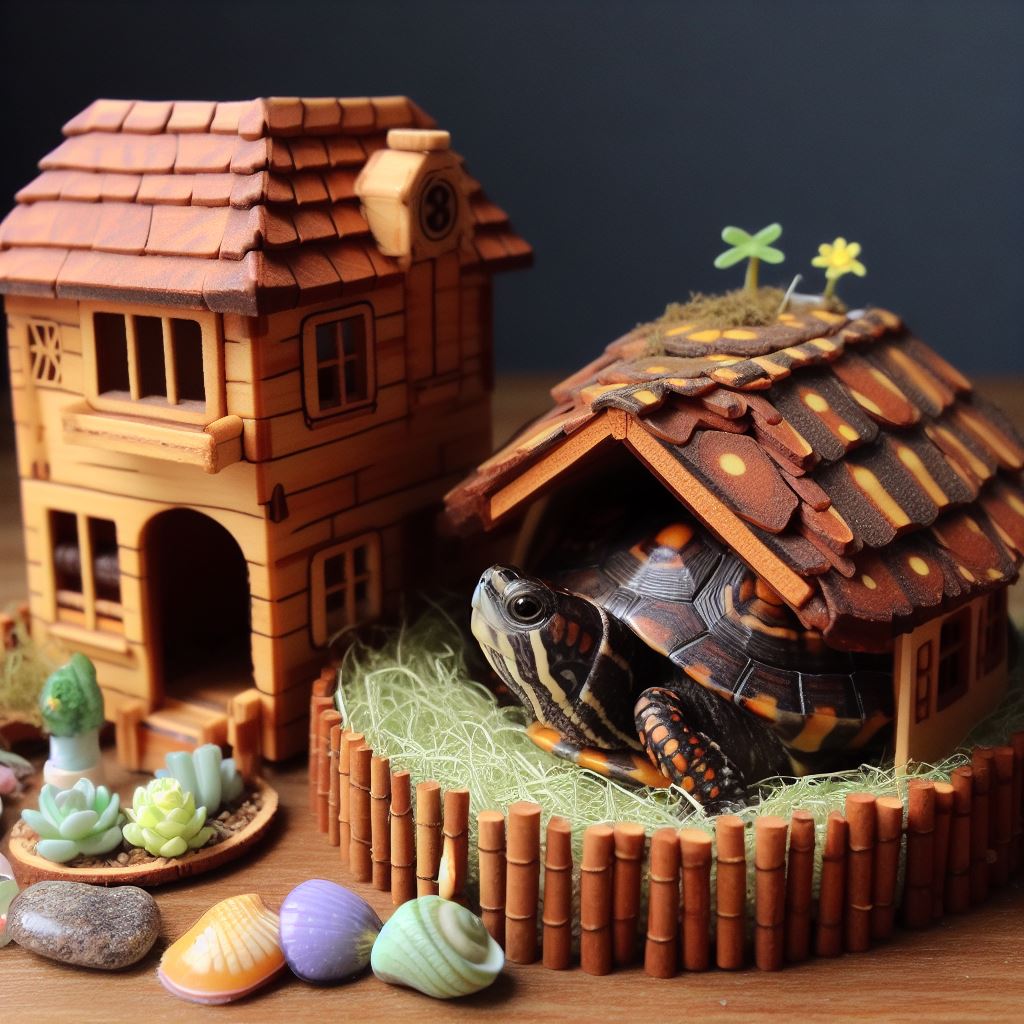
Provide a substrate mixture (the material used to cover the bottom of the enclosure) of coconut coir, cypress mulch, and sphagnum moss to maintain humidity levels between 60-80%.
Include hiding spots, such as cork bark or half logs, and a shallow water dish for soaking and drinking.
Outdoor enclosures should be secure, predator-proof, and offer both sunny and shaded areas.
Natural vegetation, logs, and rocks can provide hiding spots and enrichment. A small pond or water dish should also be included.
Temperature, Lighting, and Humidity
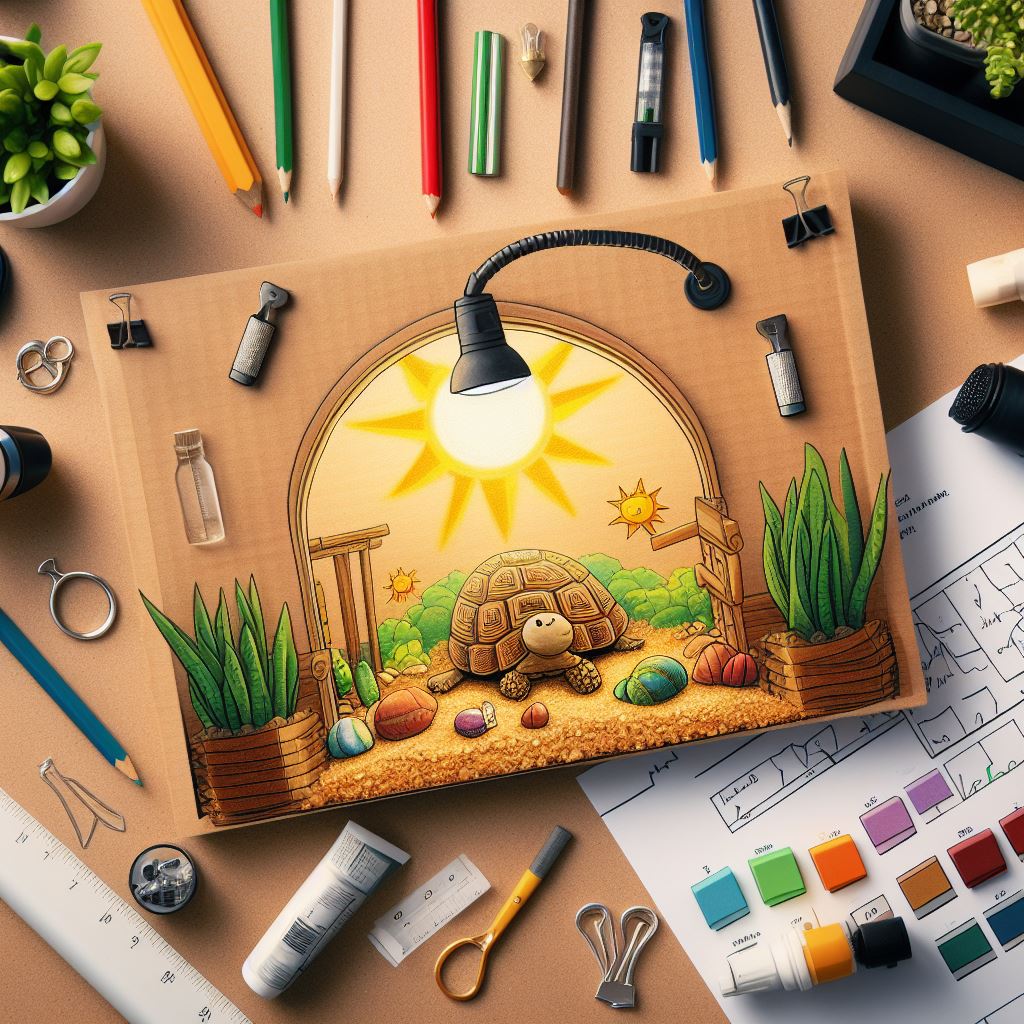
Temperature and lighting are crucial components of a healthy Eastern Box Turtle habitat.
The enclosure should have a basking area with a temperature of 85-90°F, while the cooler end should be around 70-75°F.
Use a combination of heat lamps and UVB bulbs to provide appropriate heat and light, and maintain a consistent day-night cycle.
Humidity is also essential for Eastern Box Turtles, as it helps maintain proper shell health.
Aim for humidity levels between 60-80% and adjust the substrate and enclosure conditions as needed to achieve this range.
Enclosure Design Considerations
When designing your turtle’s enclosure, consider the following factors:
- Space: Ensure there’s enough room for your turtle to move around, explore, and engage in natural behaviors. Overcrowding can lead to stress and health issues.
- Security: Your turtle’s enclosure should be escape-proof and safe from potential predators, such as dogs or cats.
- Enrichment: Provide a variety of items for your turtle to interact with, such as logs, rocks, and plants. This will help keep them mentally stimulated and encourage natural behaviors.
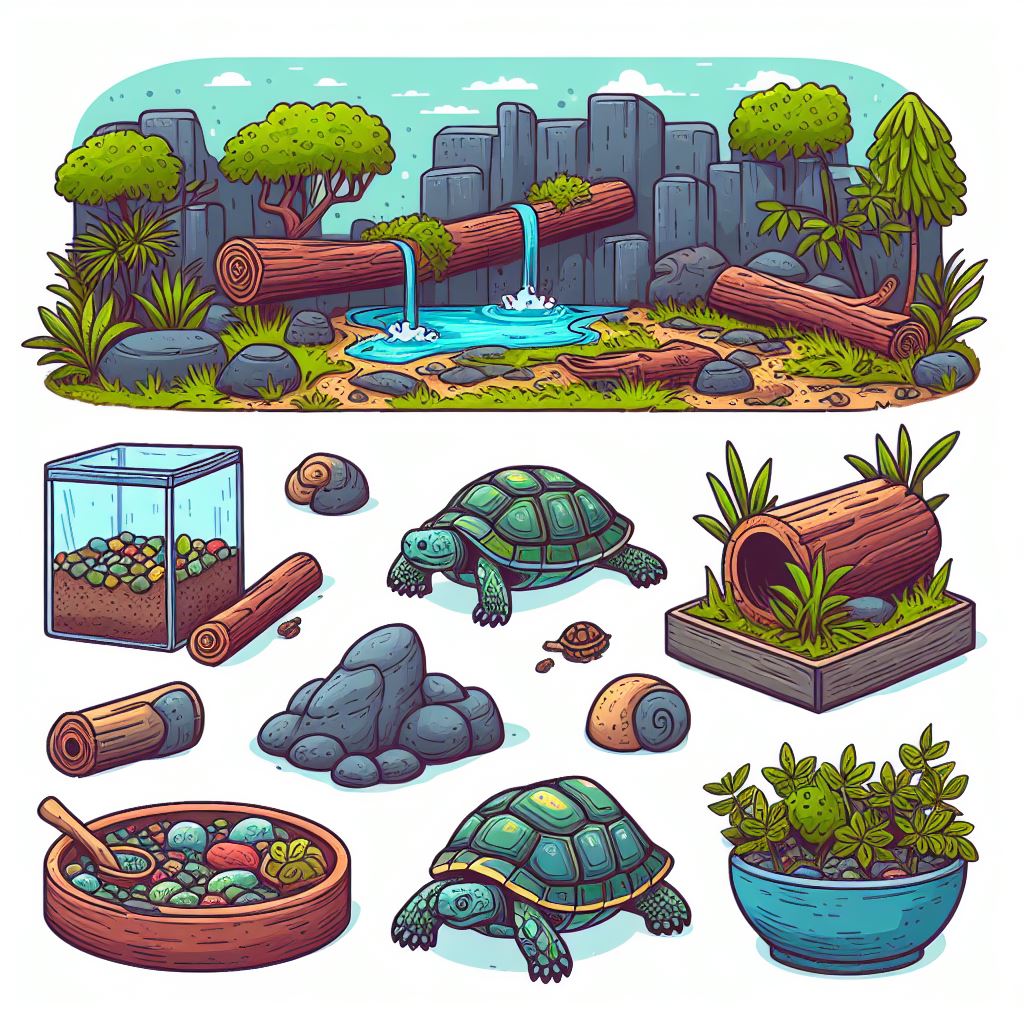
An In-Depth Guide to Caring for Eastern Box Turtles
Daily and Weekly Maintenance
Caring for an Eastern Box Turtle involves daily and weekly maintenance tasks to ensure their health and happiness.
Spot-clean the enclosure daily, removing any waste or uneaten food. Thoroughly clean and disinfect the entire habitat every 2-4 weeks.
Handling and Socialization
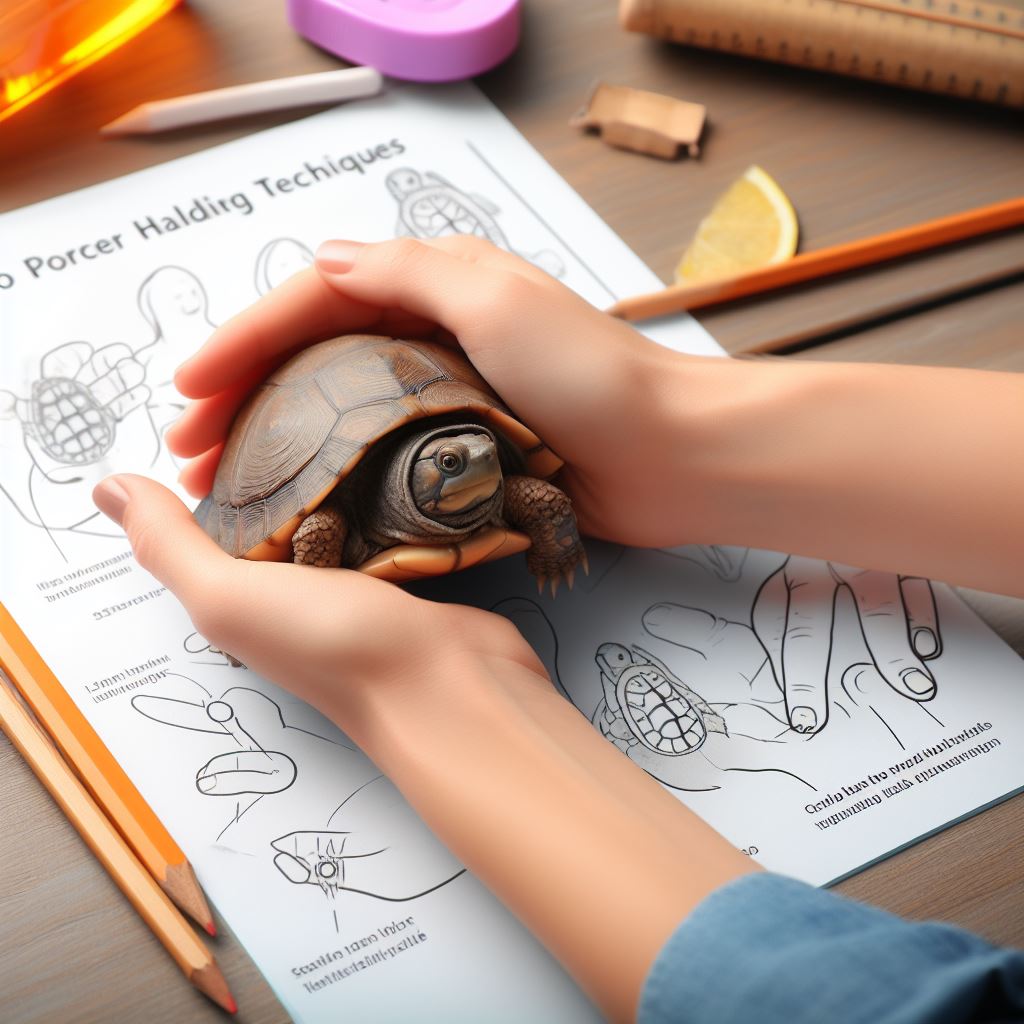
Gently and infrequently handle your turtle to reduce stress.
Frequent handling can lead to health issues and decreased lifespan.
Socialization is essential, especially for captive-bred turtles, so spend time observing and interacting with your pet to establish trust and a strong bond.
Monitoring Health and Preventing Illness
Monitor your turtle’s health closely, watching for signs of illness such as lethargy, loss of appetite, or discharge from the eyes or nose.
Consult a reptile veterinarian if you suspect any health issues.
Veterinary Care and Check-ups
Establishing a relationship with a reptile veterinarian is crucial to your turtle’s well-being.
Regular check-ups can help identify and address potential health concerns before they become serious issues.
Additionally, a veterinarian can provide guidance on proper care, diet, and habitat requirements.
The Ideal Eastern Box Turtle Diet: What to Feed Your Pet
Balanced Diet for Omnivorous Turtles
Eastern Box Turtles are omnivores, requiring a balanced diet of plant and animal matter.
In the wild, they consume a variety of insects, worms, slugs, fruits, and vegetables.
To replicate this diet in captivity, offer a combination of commercial turtle pellets, live or canned insects, and fresh produce.

Diet Components and Feeding Schedule
High-quality turtle pellets should make up about 50% of your turtle’s diet.
Supplement with insects like crickets, mealworms, or earthworms, and provide a variety of leafy greens, vegetables, and fruits.
Some favorites include collard greens, dandelion leaves, squash, and berries.
Feed adults every other day and juveniles daily.
Offer an amount equivalent to the size of your turtle’s head to prevent overfeeding.

Water and Hydration
In addition to a balanced diet, it’s essential to provide your turtle with access to clean, fresh water at all times.
A shallow water dish should be placed in the enclosure for drinking and soaking.
Change the water daily and clean the dish regularly to prevent the growth of harmful bacteria.
Raising Baby Eastern Box Turtles: Hatchlings and Juveniles
Special Care for Hatchlings and Juveniles
Caring for baby Eastern Box Turtles requires attention to their specific needs as they grow and develop.
Hatchlings and juveniles need higher humidity levels, around 80-90%, to ensure proper shell growth.
Monitor their weight and size regularly, and adjust the enclosure and diet as needed.
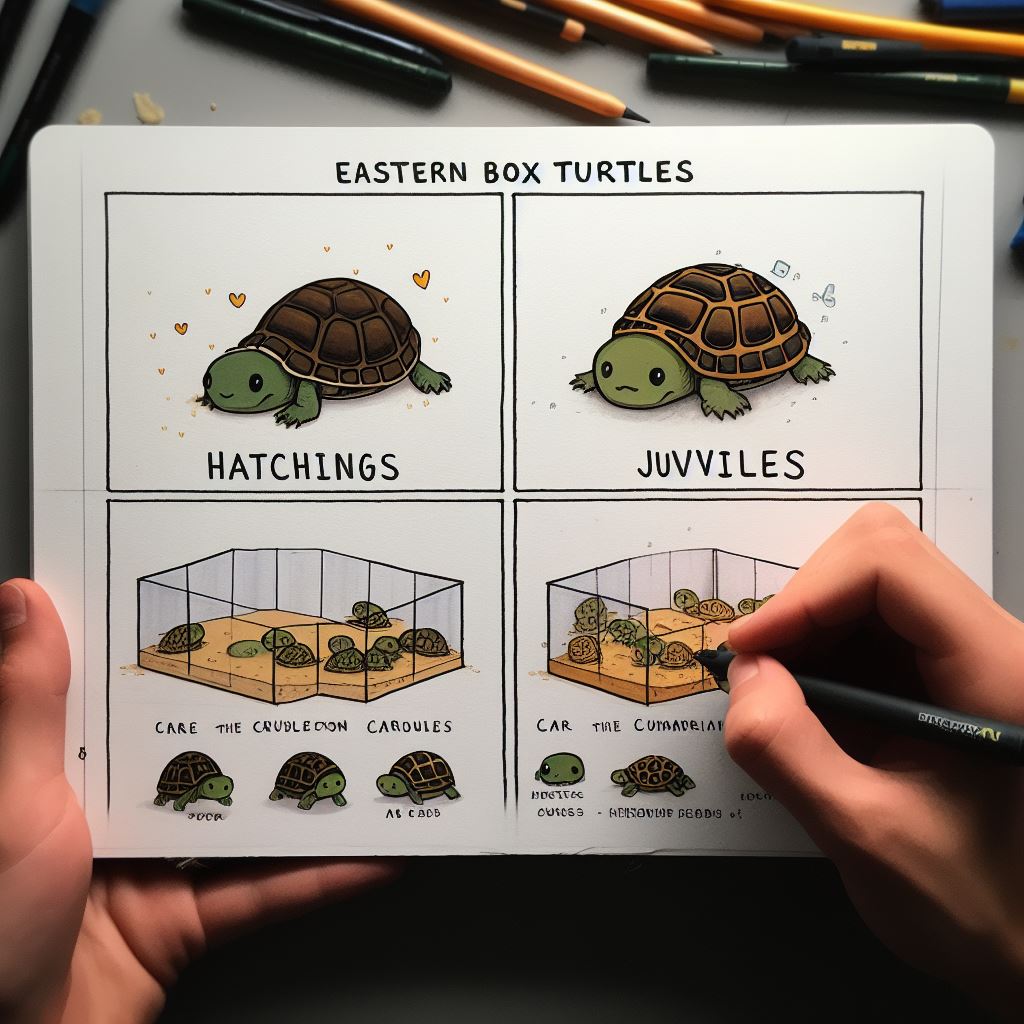
Feeding Baby Turtles

Baby turtles should be fed daily, with a focus on protein-rich foods like insects and turtle pellets.
Gradually introduce vegetables and fruits as they grow.
Providing a calcium supplement, such as cuttlebone, can help support healthy shell development.
Monitoring Growth and Development
It’s essential to keep a close eye on your baby turtle’s growth and development.
Regularly assess their overall health, and consult with a reptile veterinarian if you have any concerns.
Early intervention can help prevent potential health issues and ensure your turtle thrives.
Eastern Box Turtle Lifespan: What to Expect and How to Ensure a Long, Healthy Life
Expected Lifespan and Contributing Factors
Eastern Box Turtles can live 30-50 years or more in captivity with proper care.
Ensuring a long, healthy life involves providing a balanced diet, clean habitat, and prompt veterinary care when needed.

Preventing Common Health Issues
Regularly assess your turtle’s health and consult with a reptile veterinarian for annual check-ups or any concerns.

Be vigilant in preventing common health issues, such as:
- Respiratory infections: Maintain proper humidity levels and ensure the enclosure is well-ventilated.
- Shell rot: Keep the enclosure clean and dry, and monitor your turtle’s shell for any signs of discoloration or softening.
- Parasites: Regularly inspect your turtle for any signs of parasites, and consult a reptile veterinarian if you suspect an infestation.
Additionally, avoid overhandling and maintain a stress-free environment for your pet.
Caring for Aging Turtles
As your turtle ages, it’s crucial to adjust their care and habitat to accommodate their changing needs.
Older turtles may require more frequent veterinary check-ups and adjustments to their diet or enclosure to ensure continued health and well-being.
Conclusion
In conclusion, having an Eastern Box Turtle as a pet can be a fulfilling and delightful experience.
They can provide many years of friendship and fascination. By ensuring the best care, nutrition, and environment, you can contribute to your turtle’s long, healthy, and content life.
As pet owners, it is our duty to advocate for conservation and responsible pet ownership.
By spreading your knowledge and enthusiasm for Eastern Box Turtles, you can play a part in building a brighter future for these enchanting animals.
Keep in mind that looking after an Eastern Box Turtle requires a long-term commitment.
By investing time, effort, and resources in their care, you can establish a strong connection with your pet.
This commitment also helps support the preservation of this extraordinary species.
With appropriate care, your Eastern Box Turtle can flourish and bring happiness to your life for many decades.










